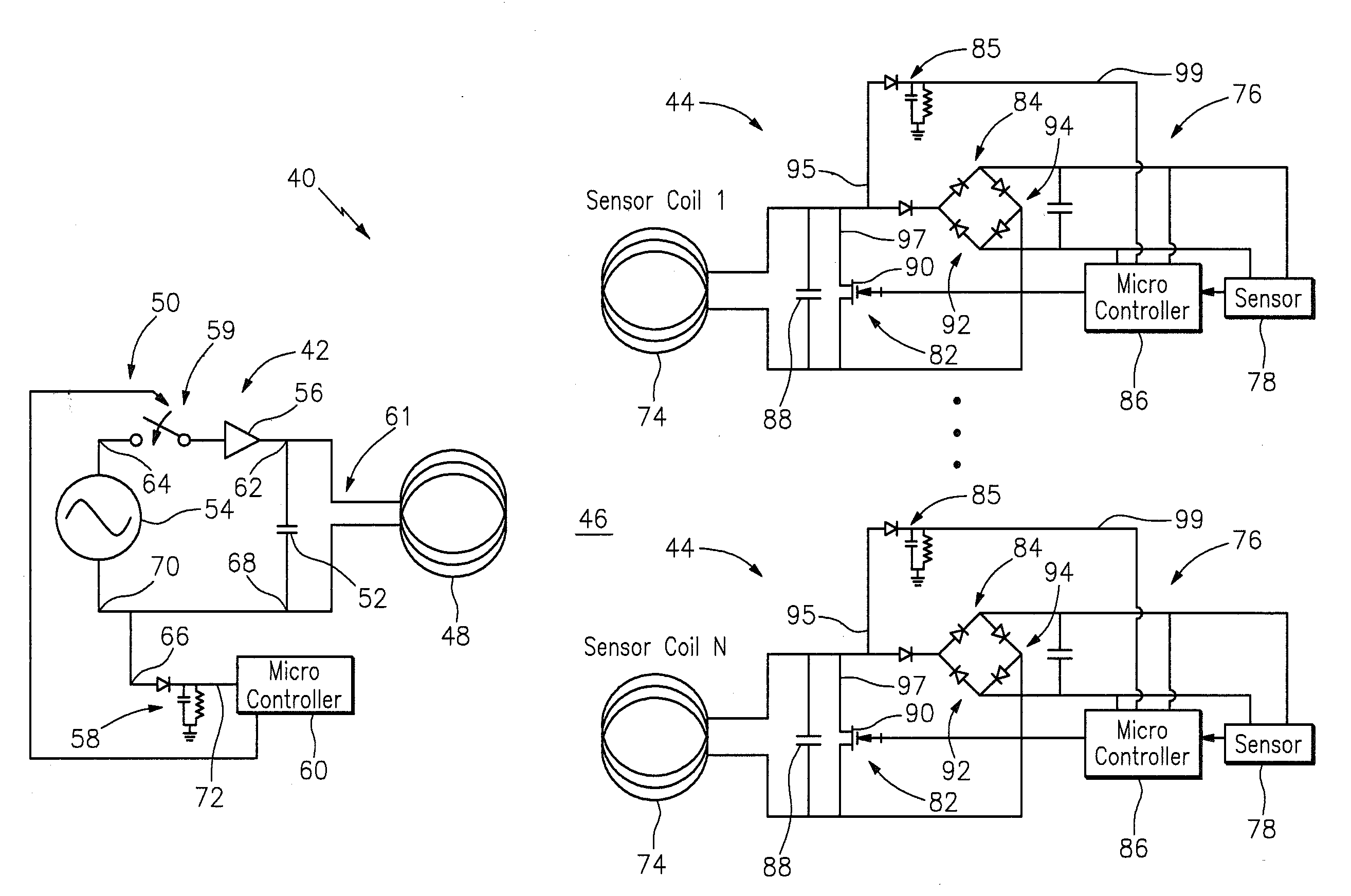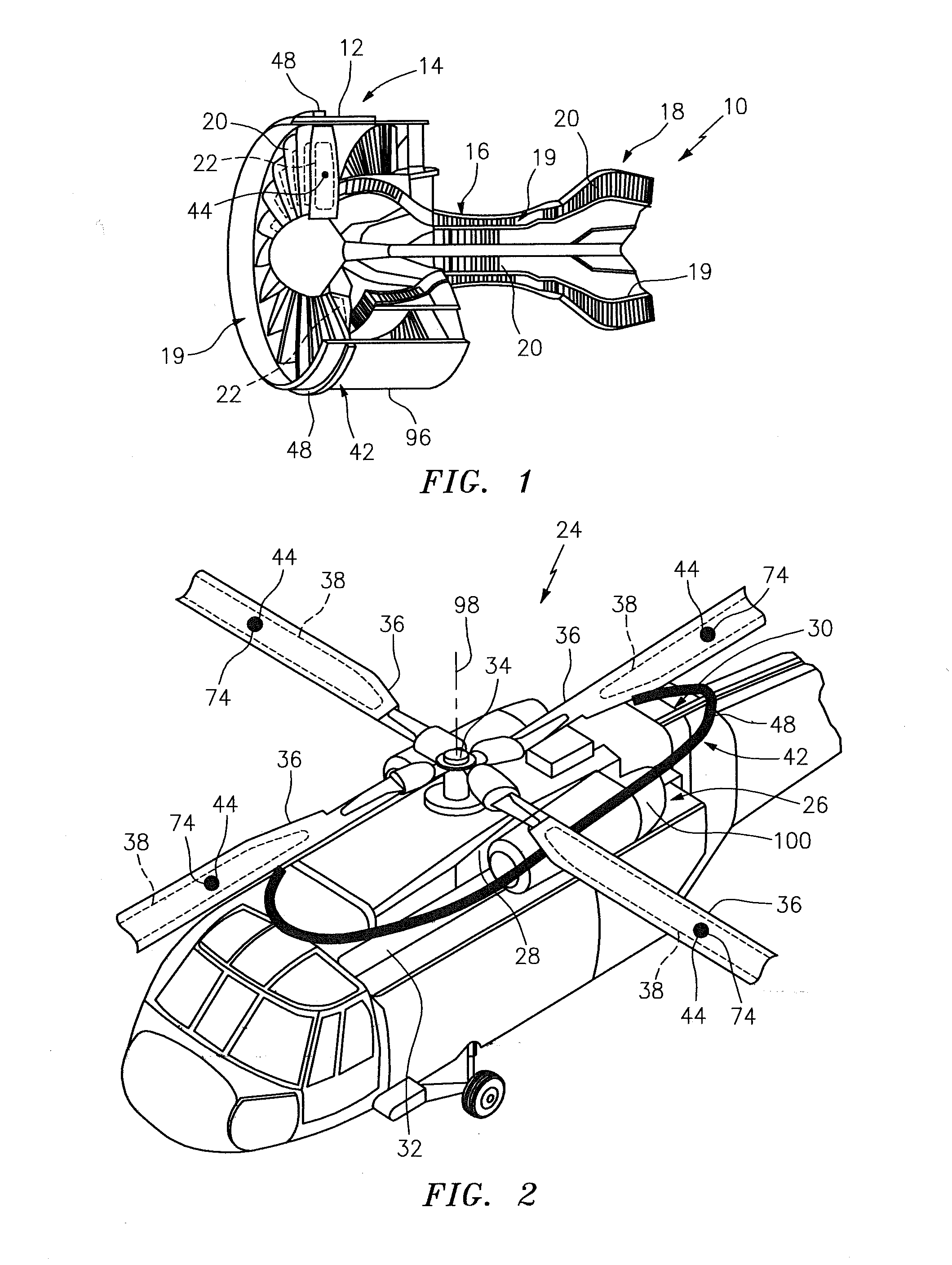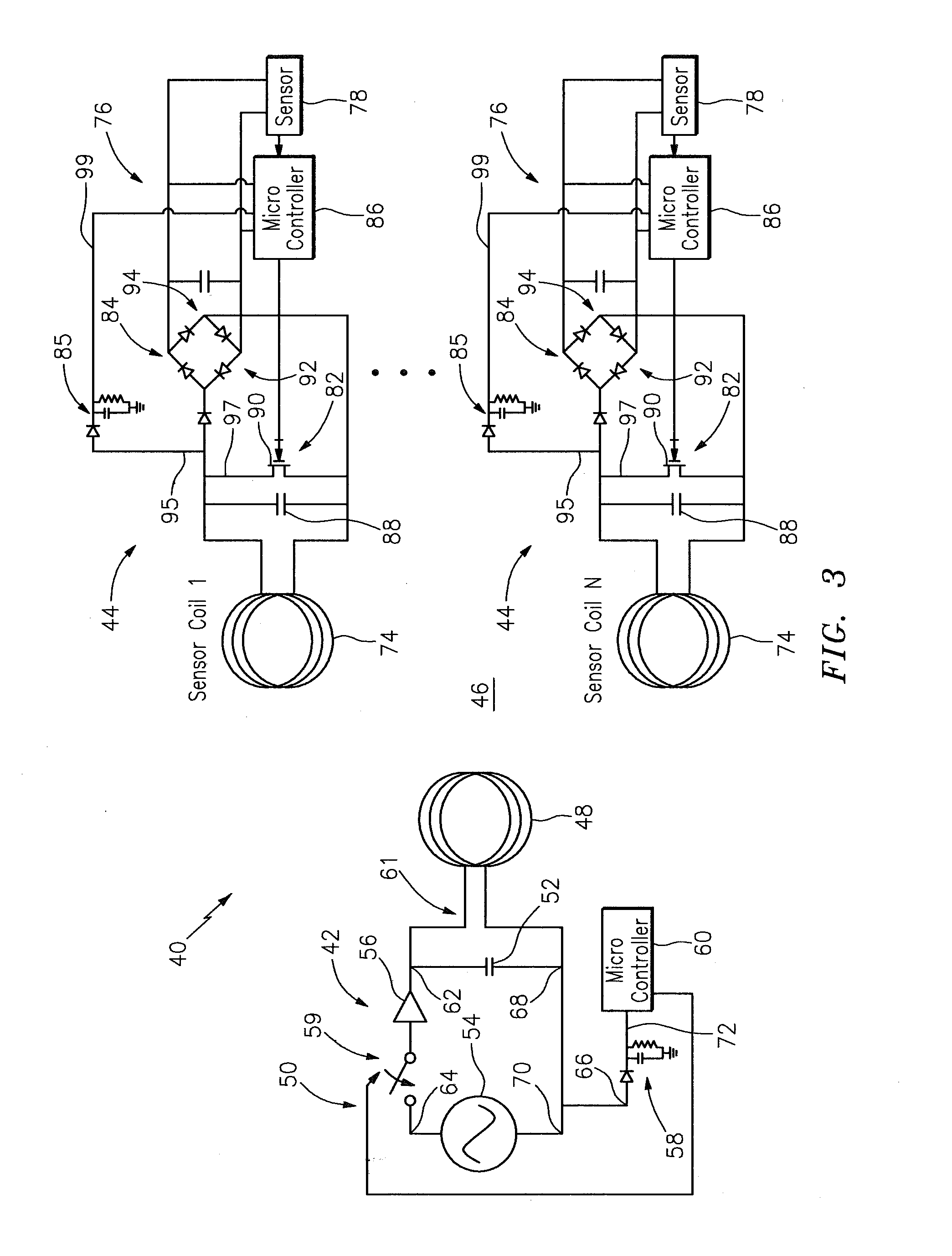Wireless sensor for an aircraft propulsion system
a propulsion system and wireless technology, applied in the direction of registering/indicating, machines/engines, registering/indicating vehicles, etc., can solve the problem that the hollow blades are also more prone to damag
- Summary
- Abstract
- Description
- Claims
- Application Information
AI Technical Summary
Benefits of technology
Problems solved by technology
Method used
Image
Examples
Embodiment Construction
[0015]The present invention includes a method and system for wirelessly monitoring an aircraft propulsion system. At least one component of the aircraft propulsion system can be monitored, for example, by configuring a wireless monitoring system, having a primary transducer and at least one secondary transducer, with the aircraft propulsion system. The secondary transducer is wirelessly powered by a magnetic field generated by the primary transducer. A sensor, included in the secondary transducer, monitors at least one operational parameter of the aircraft propulsion system component. The secondary transducer wirelessly transmits an output signal, indicative of the monitored parameter, to the primary transducer through the magnetic field. The primary transducer can then generate sensor data from the received output signal for use in high-level control. Examples of each system and component used in this method will be described below in further detail.
[0016]Referring to FIGS. 1 and 2...
PUM
 Login to View More
Login to View More Abstract
Description
Claims
Application Information
 Login to View More
Login to View More - R&D
- Intellectual Property
- Life Sciences
- Materials
- Tech Scout
- Unparalleled Data Quality
- Higher Quality Content
- 60% Fewer Hallucinations
Browse by: Latest US Patents, China's latest patents, Technical Efficacy Thesaurus, Application Domain, Technology Topic, Popular Technical Reports.
© 2025 PatSnap. All rights reserved.Legal|Privacy policy|Modern Slavery Act Transparency Statement|Sitemap|About US| Contact US: help@patsnap.com



